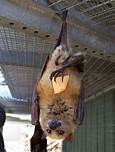How to Install a Pet Fence
A pet fence is a great way to keep your pet safe and contained, without having to keep them on a leash or in a crate. Pet fences can be installed above or underground, and can be used for dogs, cats, and other animals. If you're thinking about installing a pet fence, here are a few things you need to know.

Choosing the Right Pet Fence
The first step is to choose the right pet fence for your needs. There are two main types of pet fences: above-ground fences and underground fences. Above-ground fences are typically made of wood, metal, or plastic, and are installed above the ground. Underground fences are installed underground, and use a wire buried beneath the ground to create a boundary that your pet cannot cross.
When choosing a pet fence, you need to consider the size of your yard, the type of animal you have, and your budget. Above-ground fences are typically less expensive than underground fences, but they can be more difficult to install. Underground fences are more expensive, but they are easier to install and can be used for a wider variety of animals.
Installing an Above-Ground Pet Fence
To install an above-ground pet fence, you will need to purchase a fence kit that includes all of the necessary materials, such as posts, rails, and panels. You will also need a few tools, such as a hammer, a drill, and a level. Once you have everything you need, you can follow these steps to install your pet fence:
1. Determine the layout of your fence. You need to decide where you want your fence to go and how big you want it to be. Once you have determined the layout, mark the location of the posts with stakes.
2. Install the posts. Dig holes for the posts at the marked locations. The holes should be at least 2 feet deep and 6 inches wide. Place the posts in the holes and fill them with concrete.
3. Attach the rails to the posts. Once the concrete has cured, you can attach the rails to the posts. Use screws or nails to secure the rails to the posts.
4. Attach the panels to the rails. The panels are typically attached to the rails with screws or nails. Make sure that the panels are securely attached to the rails.
5. Test the fence. Once you have installed the fence, you need to test it to make sure that it is working properly. Turn on the power to the fence and see if your pet can cross the boundary.
Installing an Underground Pet Fence
To install an underground pet fence, you will need to purchase a fence kit that includes all of the necessary materials, such as a transmitter, a wire, and flags. You will also need a few tools, such as a shovel, a wire cutter, and a crimping tool. Once you have everything you need, you can follow these steps to install your underground pet fence:
1. Determine the layout of your fence. You need to decide where you want your fence to go and how big you want it to be. Once you have determined the layout, mark the location of the wire with flags.
2. Bury the wire. Dig a trench along the marked line. The trench should be at least 6 inches deep and 4 inches wide. Place the wire in the trench and cover it with soil.
3. Install the transmitter. The transmitter is typically installed in your garage or basement. Connect the transmitter to the wire and turn it on.
4. Train your pet. Once the fence is installed, you need to train your pet to stay within the boundary. This can be done by using a shock collar or a spray collar.
5. Test the fence. Once you have trained your pet, you need to test the fence to make sure that it is working properly. Turn on the power to the fence and see if your pet can cross the boundary.
Troubleshooting Pet Fences
If you are having problems with your pet fence, there are a few things you can do to troubleshoot the problem.
1. Check the power. Make sure that the power to the fence is turned on.
2. Check the wire. If you have an underground fence, make sure that the wire is not broken or damaged.
3. Check the transmitter. If you have an underground fence, make sure that the transmitter is working properly.
4. Check the receiver. If you have a shock collar or a spray collar, make sure that the receiver is working properly.
5. Check the training. If you have trained your pet to stay within the boundary, make sure that the training is effective.
If you are still having problems with your pet fence, you can contact the manufacturer for assistance.
Declaration: All article resources on this website, unless otherwise specified or labeled, are collected from online resources. If the content on this website infringes on the legitimate rights and interests of the original author, you can contact this website to delete it.





